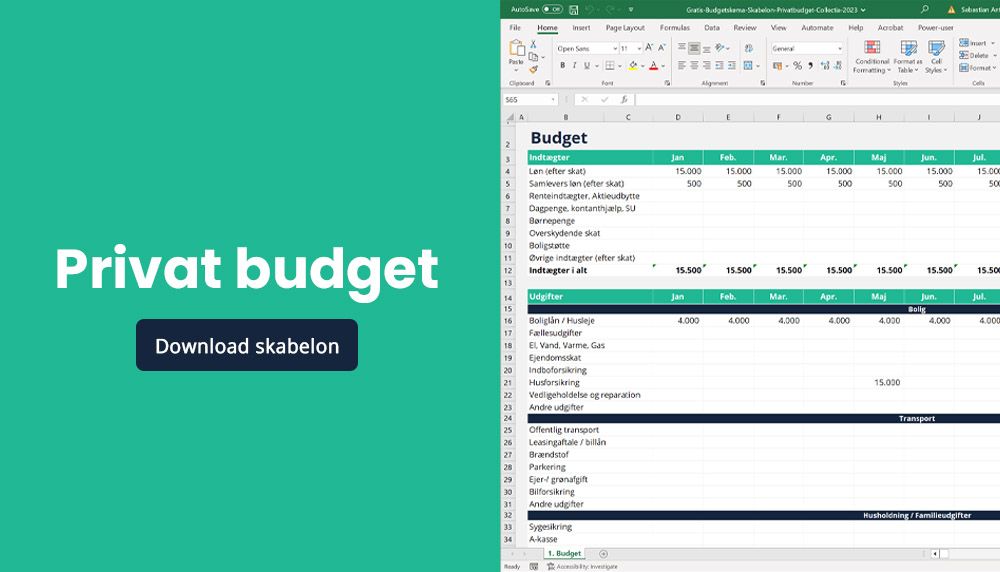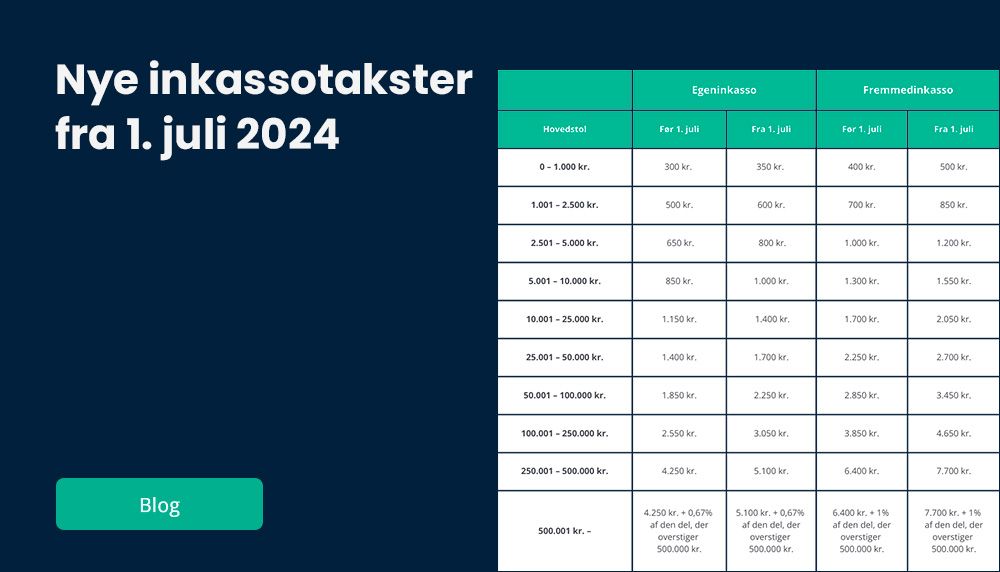
Judicial debt collection - all you need to know in brief
Few companies deal with debt collection on a daily basis - and thankfully so. Unfortunately, debt collection often involves extra work and costs, unless you choose to let a debt collection agency or a lawyer do the work for you. However, the same is also true for judicial debt collection. This type of debt collection requires a number of additional formalities and requirements.
This blog post will guide you through everything you need to know about a legal debt collection process and the things you should know about debt collection, payment orders, the enforcement court - and the processes involved.
What is the difference between extrajudicial and judicial debt collection?
As the name suggests, an extrajudicial process takes place outside the enforcement court and/or civil court - and is handled either by the creditor (the company) itself, the creditor's debt collection company or the creditor's debt collection lawyer. A wide range of actions can be taken, such as sending collection notices and reminder letters, calling the debtor, setting up installment plans, and charging reminder fees and compensation fees - all with the aim of getting the debtor to pay all or part of the debt. If the debtor is unable to pay all or part of the amount, the debt collection process may also include an installment plan.
A judicial debt collection process, either through the enforcement court or civil court, is debt collection with the assistance of the court - either with the purpose of obtaining a judgment/foundation for the debt and/or to attach any assets and movable property that the debtor may own - and subsequently realize these to cover the claim.
Advantages and disadvantages of judicial debt collection?
There are both advantages and disadvantages to the legal debt collection process, and in this post we have chosen to focus on what we believe are the biggest in our daily work.
Advantages
- Possibility of attachment of any assets and movable property (house, car, boat, etc.)
- Possibility to obtain a judgment on the basis of your payment claim.
- Judgment is valid for 10 years instead of an invoice requirement of 3 years.
- Few debtors want to be physically present at the enforcement court.
- A bailiff's meeting is often done in less than 10 minutes, but be well prepared as a creditor.
- As a creditor, lawyer or debt collection company, you have the option to participate by phone if the court allows it.
Disadvantages
- The waiting time for enforcement proceedings can often be long (3 months +).
- The creditor must pay the court fees even if the debtor does not pay.
- The bailiff court does not guarantee that the case will be resolved - but it does increase the success rate.
When should judicial recovery be used?
Few people use judicial recovery as the first action against a debtor when an invoice is not paid.
This is often because judicial debt collection is associated with some waiting time at the bailiff court, and then judicial actions are associated with a bailiff court fee to the bailiff court. As a result, most debt collection companies, lawyers and creditors choose to run an out-of-court process themselves before taking legal action - and most cases are often resolved before they reach the enforcement court or civil court.
Our recommendation is to initially run a debt collection process outside the enforcement court. However, how long this process should be is up to you, your liquidity and your resources. At the same time, it's also important to consider when the claim becomes time-barred.
In order for legal debt collection to be initiated, you as a creditor, your lawyer or your debt collection company must first have sent a reminder letter, cf. section 10 of the Danish Debt Collection Act. In this letter, the debtor is given a deadline of at least 10 days to pay the claim and is also informed that if the claim is not paid within 10 days of the letter being sent - this will trigger debt collection. It is not a requirement that interest, reminder fee or compensation fee is imposed on this letter. It is merely an option for you as a creditor. Note that this letter is also called a debt collection notice, a §10 letter or a debt collection letter.
Once this has been sent, you or your debt collection company must send a so-called payment claim form.
Please note the following.
- In the case of an invoice claim, your invoice must not be older than 3 years - otherwise it is time-barred and it is not possible to submit the unpaid invoice to the enforcement court for judicial recovery. In other words, the claim is lost and should simply be written off as a loss on debtors.
- Please also note that if you wish to make use of the enforcement court, a payment order must be submitted. The payment order applies to all claims under DKK 100,000. If your claim exceeds DKK 100,000, a civil action must be brought.
- If there is an objection to the claim, regardless of its size, you must bring a civil action.
How does judicial debt collection work?
Regardless of the course of events leading up to the legal actions, a payment demand form must generally be filled out for the purpose of sending a payment demand to the enforcement court if the claim is less than DKK 100,000. However, this only applies if there has been no objection to the claim.
The form contains all relevant information about the two parties (debtor and creditor) and the outstanding amount. This is sent to the enforcement court.
If the debtor then fails to object to your order for payment within the time limit of 14 days after service set by the enforcement court, the enforcement court will ensure that the order for payment has the same binding effect as a judgment. The debtor is then ordered to pay your claim as well as the costs, interest, reminder fee, compensation fee and court fees incurred to the enforcement court.
You (or your debt collection company) will then call a meeting with the debtor to discuss the debtor's options for paying or settling the claim. At this meeting, the debt may also be secured by any assets, etc.
At the meeting, an attempt will typically be made to establish an installment plan if the debtor does not have the full amount. After this, your claim is valid for another 10 years - unlike an invoice claim, which expires after 3 years.
In addition, attachments can be made if the debtor has attachable assets.
Should I start sending a payment order myself?
As a debtor, you can easily engage in judicial debt collection yourself and submit a payment claim to the enforcement court. Forms are available on the website of the bailiff court.
However, we recommend that you let a debt collection company or a debt collection lawyer conduct the actual enforcement court meeting for you. Time for the meeting is often limited, and it is important to have the right questions ready for the debtor - and that the correct solution is established based on the questions and dialog with the debtor.
Remember that when you use Collectia as a debt collection partner, you generally have legal debt collection included in your solution. We therefore take all necessary actions, so you do not need to familiarize yourself with various formalities and forms.











